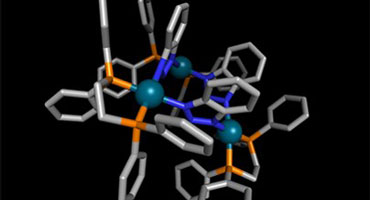Chemistry of Life
Bioinorganic Chemistry

Members: Rama Suntharalingam, Patricia Rodríguez-Maciá, Philip Ash
Bioinorganic chemistry is the study of metal ions and their applications in biological systems. Although life is traditionally considered ‘organic’ (the elements C, H, N, and O account for over 95% of the mass of a typical human body), metal ions and inorganic materials play vital roles in biology, the environment, and medicine. Bioinorganic chemistry research at the University of Leicester is wide-ranging, providing insight into the therapeutic potential of metal complexes, developing advanced spectroscopic methods to probe metalloenzyme mechanism, and exploiting metalloenzymes as biocatalysts for a more sustainable future.
Metallopharmaceuticals provide chemical and physical diversity that can be exploited in the development of novel therapeutic agents. Our experts have pioneered the use of metal complexes selectively killing cancer stem cells which evade conventional chemotherapies and allow cancers to regenerate. In addition, research seeks to engineer new nano-material systems to deliver therapeutics to their site(s) of action.
Approximately 40% of all currently known enzymes contain a metal ion at their active site. Of particular importance are metalloenzymes that catalyse activation of molecules such as hydrogen (H2), carbon monoxide, carbon dioxide, and nitrogen (N2). The chemistry that occurs at enzyme active sites is inspirational for production and use of future sustainable fuels. In combination with electrochemistry, we use spectroscopic techniques such as X-ray absorption spectroscopy and time-resolved infrared spectroscopy to build up 'snapshots' of enzyme reactivity in situ during catalysis.
Biocatalysis research at Leicester aims to understand and exploit nature’s mechanisms and pathways in order to facilitate new and otherwise challenging chemical transformations. A significant interest lies in evolving nature-inspired metalloenzyme catalysts for energy conversion.

Bioinorganic chemistry is a fundamental pillar of our modern world, influencing a wide range of fields from energy to sustainable synthesis and healthcare. We sit at the intersection of chemistry, biology, and medicine, enabling development of advanced materials, efficient catalysts, and metal-based drugs that form a crucial component in the fight against diseases such as cancer. We explore the essential roles that metals play in biological systems to drive innovations in drug design, medical imaging, and the development of biomimetic catalysts for sustainable technologies.